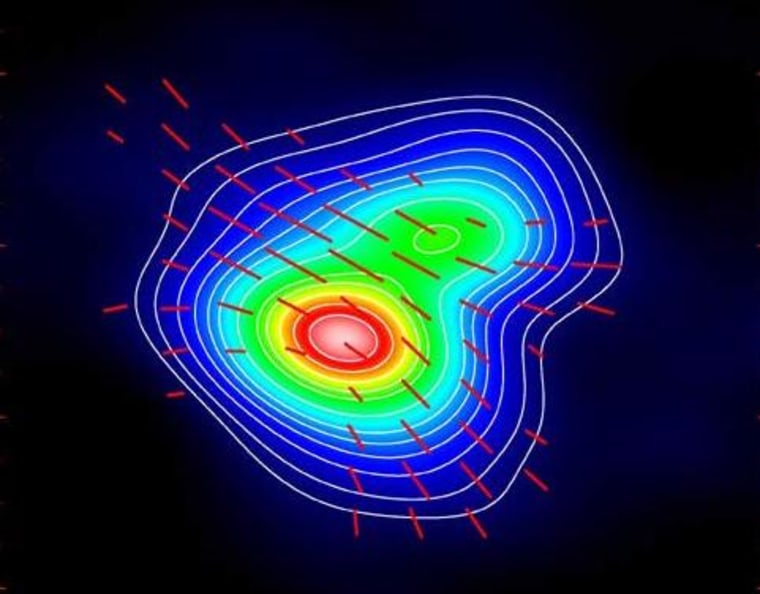For a star to form, gravity has to overcome buoyant magnetic forces that fight to keep a cloud of gas and dust from collapsing. Theorists have long suspected that the competition between gravity pulling inward and magnetic pressure pushing outward would produce a warped, hourglass pattern to the magnetic field within these collapsed cores.
Now they've finally found just such a shape.
Observations by the Smithsonian's Submillimeter Array has found the first conclusive evidence of an hourglass-shaped magnetic field in a star formation region. Measurements indicate that material in the interstellar cloud is dense enough to allow it to collapse gravitationally, warping the magnetic field in the process.
The cloud, called NGC 1333 IRAS 4A, is actually forming two stars. It is relatively nearby, 980 light-years from Earth in the direction of the constellation Perseus. The setup is part of the Perseus molecular cloud complex, a vast collection of gas and dust holding as much mass as 130,000 suns where stars are actively forming.
"We selected this system because previous work had offered tantalizing hints of an hourglass-shaped magnetic field," said Dan Marrone of the Harvard-Smithsonian Center for Astrophysics. "The Submillimeter Array offered the resolution and sensitivity we needed to confirm it."
The researchers observed dust emission from the cloud. Because the magnetic field aligns the dust grains in the cloud core, the team was able to measure the magnetic field's geometry and estimate its strength by measuring the polarization of the dust emission.
"With the special polarization capabilities of the SMA we see the shape of the field directly," said Ramprasad Rao of the Institute of Astronomy and Astrophysics, Academia Sinica. "This is the first textbook example of theoretically predicted magnetic structure."
The results were detailed last week in the journal Science.
